Individuals typically nostalgically reminisce about archaic expertise, laughing concerning the frustrations and limitations of cassette tapes or floppy disks, earlier than including ‘however they have been wonderful on the time!’ Nevertheless, you merely can’t conceal the horror of CGA graphics – the PC’s first coloration graphics adaptor – behind such rose-tinted glasses (though orange-tinted glasses would possibly assist – extra on that later). No one, completely no person, thought CGA was wonderful on the time.
It’s onerous to think about this now, when one of the best graphics playing cards of right this moment are thus far forward of the {hardware} in present recreation consoles, however PC recreation graphics actually have been abysmal in these early days, when Nvidia was only a glint in Jensen’s eye. I had a CGA PC within the Nineteen Eighties, and even you then felt upset once you fired up a PC recreation to be greeted by a multitude of purple and black on the display screen.
On the time, we joked that CGA stood for ‘crap graphics adaptor’. No one considered IBM computer systems as video games machines then, after all – CGA was the product of IBM attempting to make a graphics commonplace that might show bar charts correctly. It wasn’t meant to compete with the Commodore 64.
Higher graphics got here to the PC later, after all, however CGA was supported for a very long time. The later EGA (enhanced graphics adaptor) and VGA (video graphics array) playing cards have been very costly at first, so CGA nonetheless had a house in low-cost IBM PC-compatible machines, equivalent to Amstrad’s PC1512. CGA first appeared in 1981, however new software program was nonetheless supporting it effectively into the early Nineties – you possibly can even run Home windows 3.0 on it.
CGA textual content mode
At its fundamental degree, a typical 16KB (sure, KB) CGA card can entry a palette of 16 colours, or fairly eight colours at two intensities. It’s principally 4-bit coloration, with three bits allotted to crimson, inexperienced and blue (RGB), and the fourth bit enabling you to alter the ‘depth’ of the colour (RGBI).
On the first degree of depth, you get black, blue, inexperienced, cyan, crimson, magenta, brown and light-weight gray. The second degree of depth principally offers you an identical colours however with an additional degree of depth, which turns the brown right into a yellow, the sunshine gray right into a white and the black right into a darkish gray, whereas creating mild variations of the opposite colours.
Now, you would possibly assume 16 colours sounds okay for 1981, however you possibly can solely show all these 16 colours on the display screen without delay in textual content mode – the mode you used to see on BIOS screens earlier than we had fancy EFI methods. On a CGA card, the textual content show has an efficient decision of 640 x 200, however it may solely show textual content characters on it, with 80 characters on the X axis, and 25 on the Y axis.
As a child, I used to mess around with this mode rather a lot, because it was the one option to get quite a lot of colours on the display screen. If you happen to knew your ASCII codes, you would show numerous strains and blocks as textual content characters and make an image. You successfully must ‘sort’ an image, fairly than drawing it – I used to spend hours doing it. I’ve included an instance within the picture above.
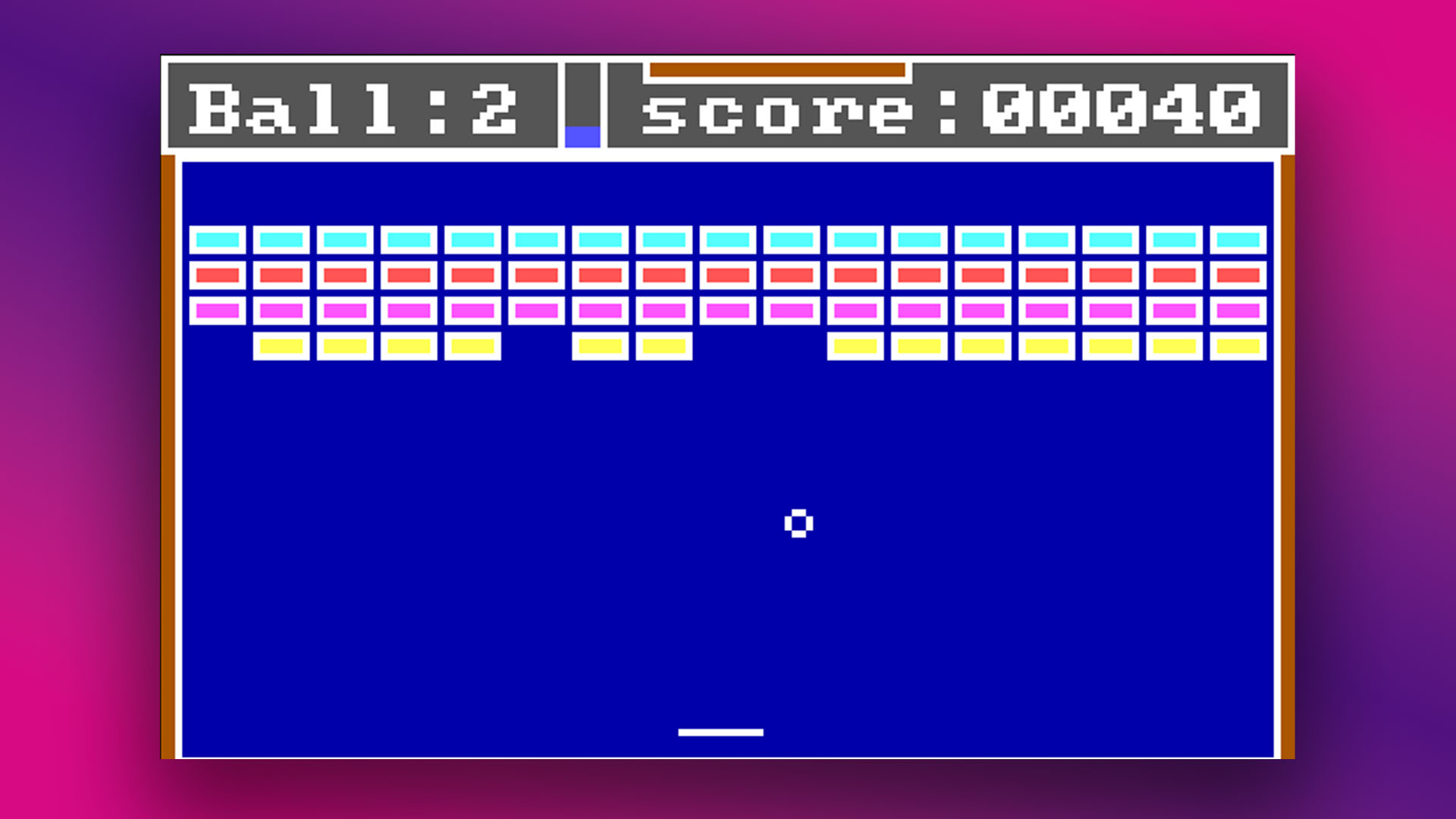
To sort ASCII codes, you maintain down Alt and kind a three-digit quantity – 176, 177, 178, and 256 offer you three blocks of variable shading and a stable block, for instance – it nonetheless works in Home windows. On this textual content mode, you would assign every character a foreground and a background coloration.
Sport builders used this mode too – I had a clone of Ms Pac-Man that used to run in textual content mode fairly than graphics mode, in addition to a clone of Breakout referred to as Bricks (pictured beneath). On a typical CGA card, it was the one option to get entry to numerous colours.
There was a trick to allow you to show all 16 colours at an efficient graphical decision of 160 x 100, by altering the variety of strains of every textual content character to show. Nevertheless, it was hardly ever used. If you happen to needed graphics fairly than textual content, you often both had 4 colours on the display screen at 320 x 200, or one coloration at 640 x 200.
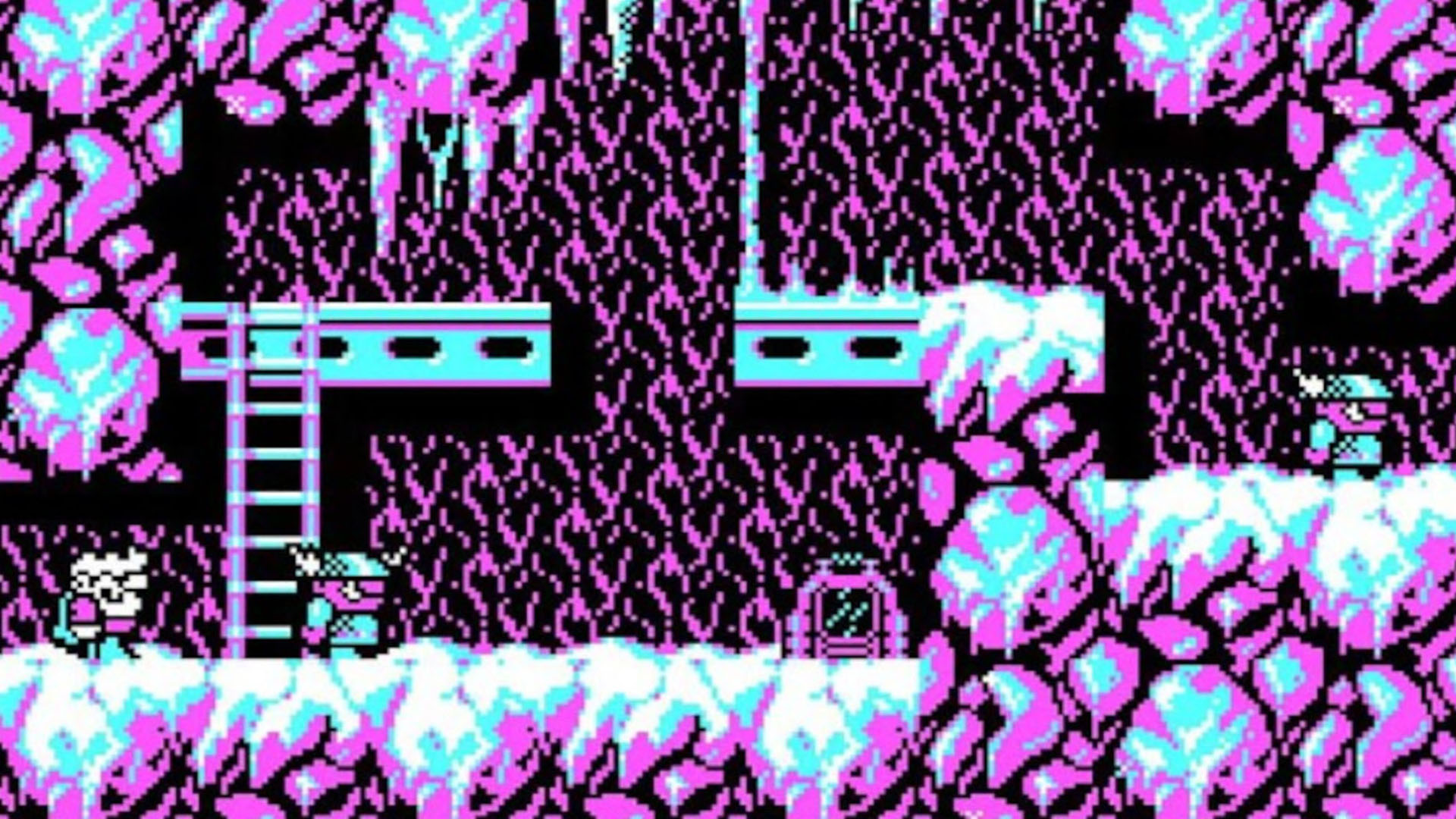
CGA coloration graphics
Let’s begin with the previous, as that was the one which enabled you to get precise coloration graphics in your PC. Typically, black was the background coloration, and also you then had three different colours. As commonplace, most video games used CGA in BIOS mode 4 (the default BIOS mode for graphics), with the high-intensity model of palette 1, which gave you black, white, mild cyan mild, and magenta.
It enabled you to make clearly outlined shapes with black on white, supplying you with cyan for skies and water after which all the things else must be crammed in with magenta. It usually appeared hideous, though it was generally higher for house video games – Captain Blood appeared surprisingly good on this mode, as you possibly can see within the picture beneath.
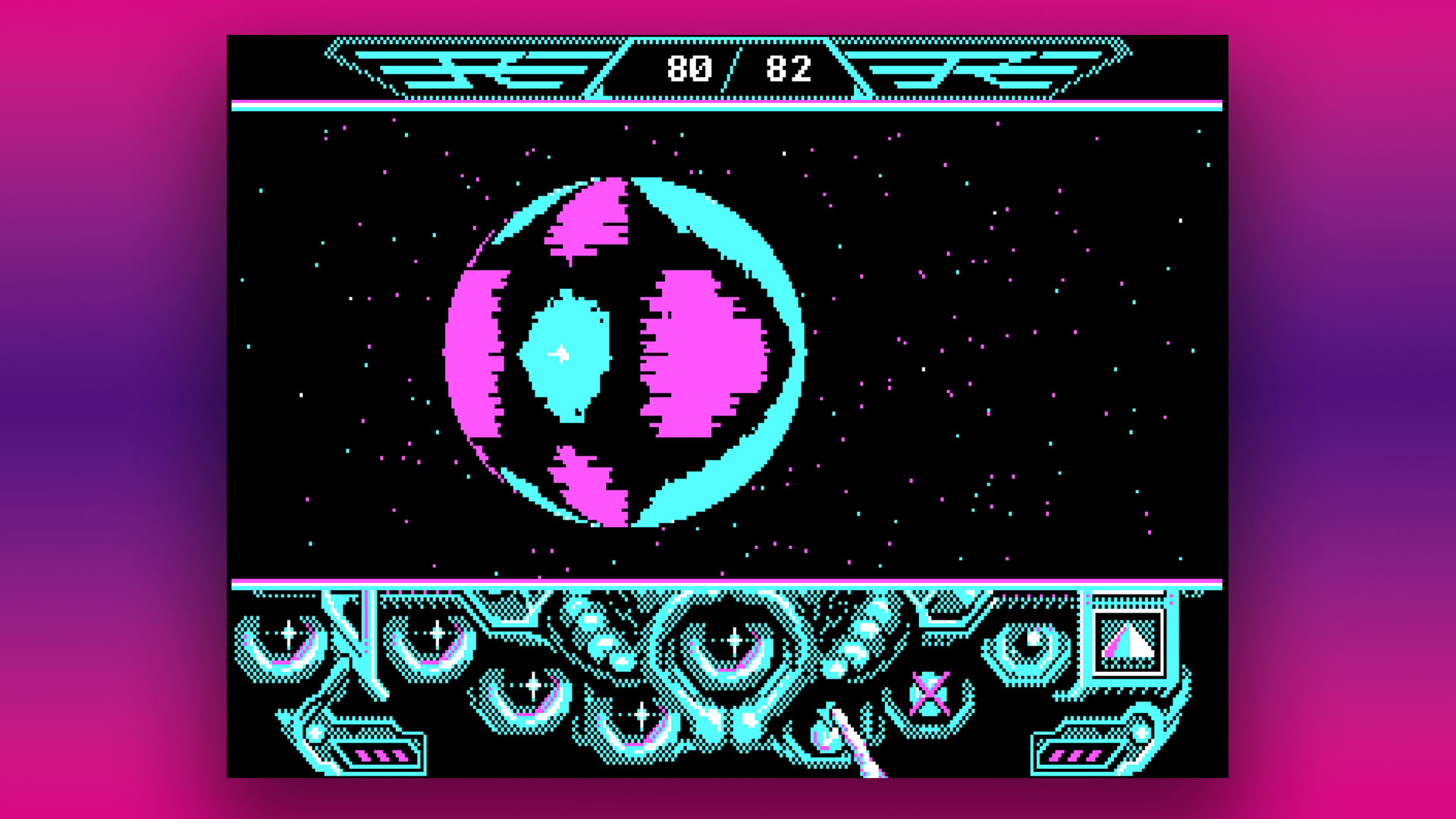
You would get different palettes too. Palette 0 was additionally out there in BIOS mode 4, and gave you crimson, inexperienced, black and brown as commonplace, or mild crimson, mild inexperienced, black and yellow in high-intensity mode.
The latter mode usually appeared higher in video games to me. It meant you couldn’t get blue for skies, however you would do fairly sunsets and darkish dungeons effectively. One in every of my favourite video games to make use of this palette was a fantasy barbarian recreation referred to as Targhan, which genuinely did look wonderful contemplating the expertise it was utilizing.
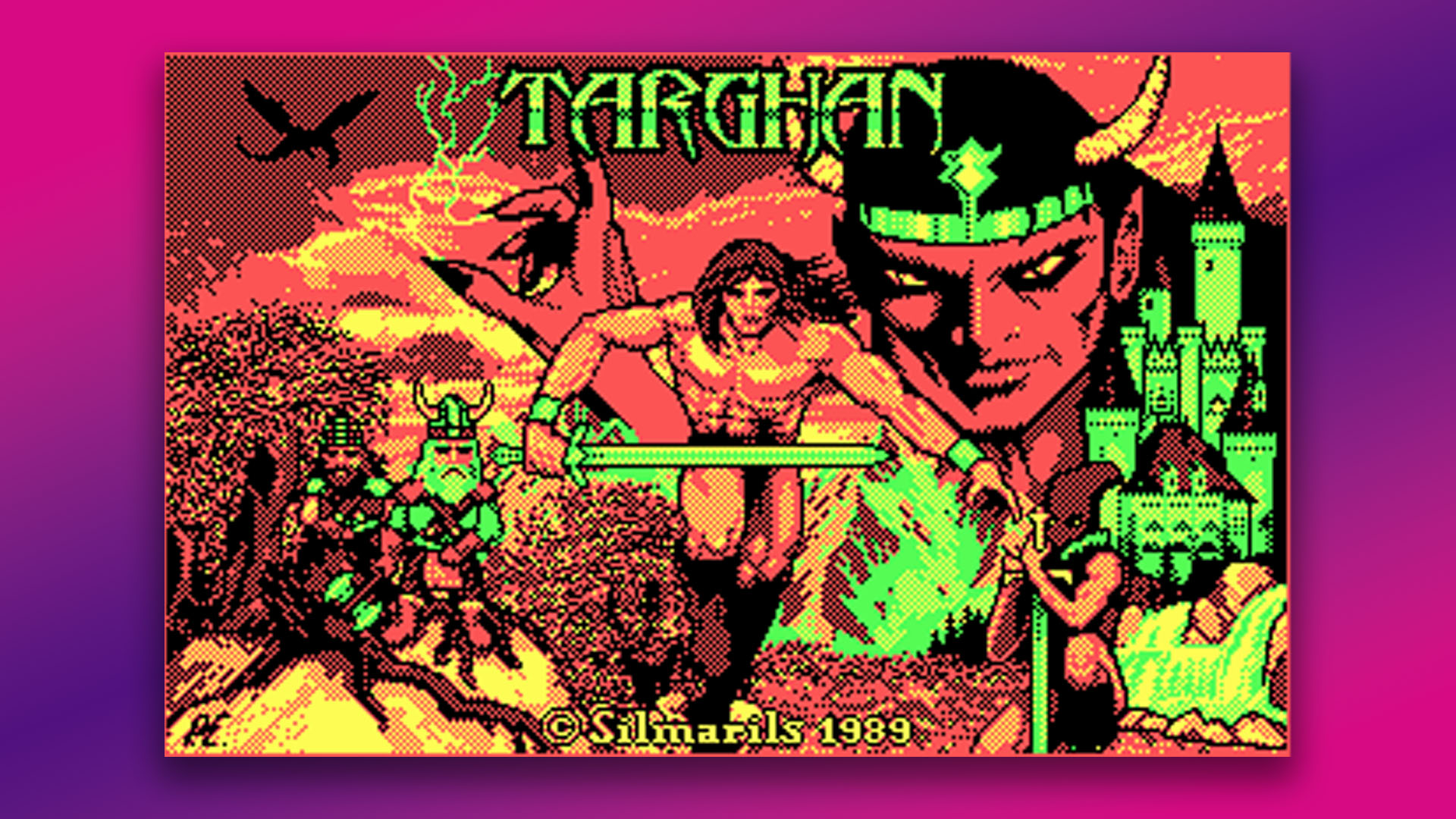
As a child, I additionally found a trick whereas taking part in with the night time imaginative and prescient filters for my Dad’s binoculars. If you happen to take a look at the cyan, magenta, black and white palette by an orange filter, it turns into the sunshine yellow, mild crimson, mild inexperienced and black palette. I purchased some orange acetate from the native artwork store and stapled it to a cardboard body with Blu-Tack in every nook – I may then swap between palettes at will!
The low-intensity model of this palette was additionally utilized in video games sometimes. One instance is Pharaoh’s Tomb, an early work by George Broussard at Apogee, who later went on to work on the Duke Nukem video games. You can even see it within the screenshot of the Frogger clone Ribit beneath.
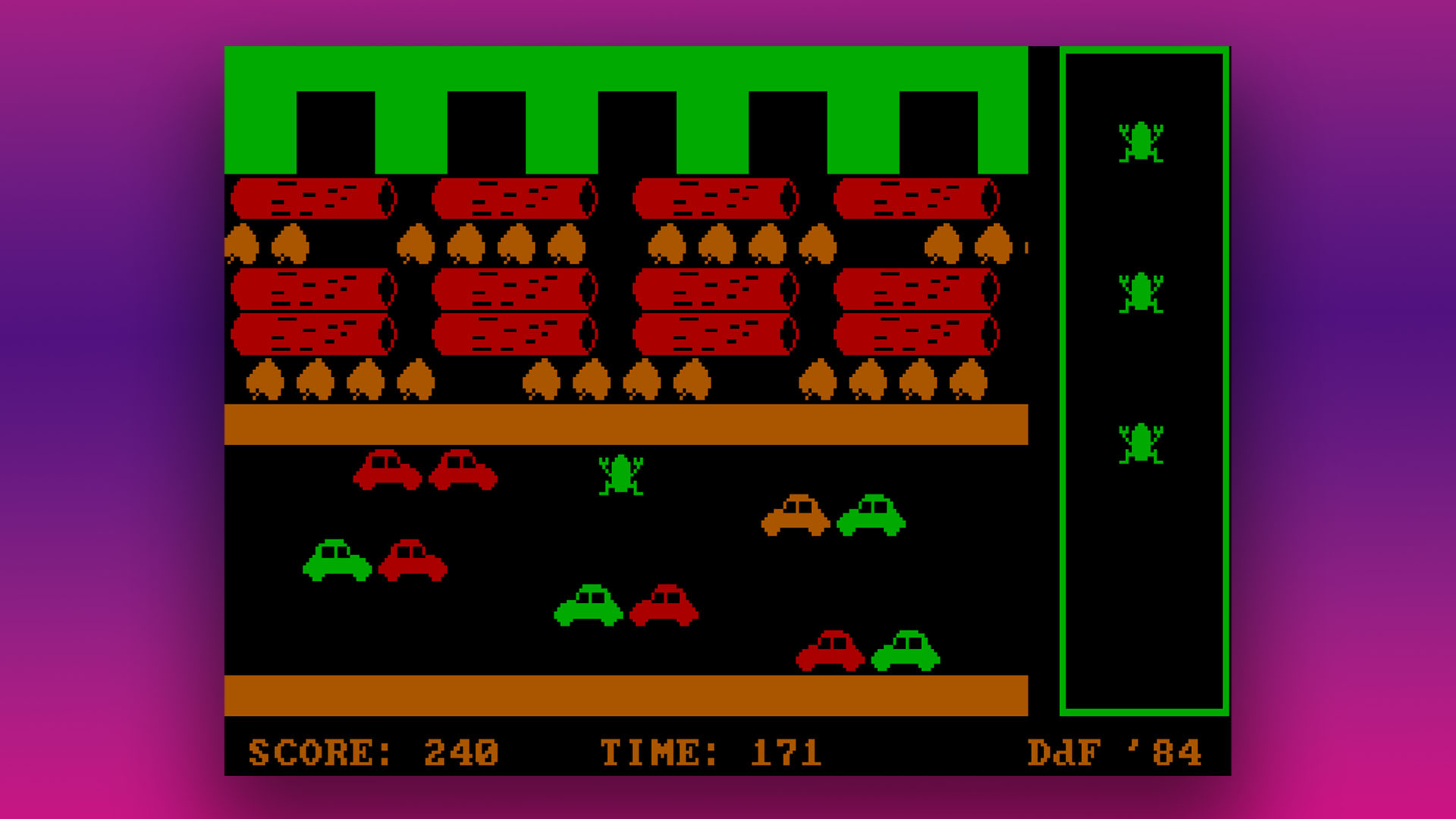
One other trick typically utilized by recreation builders was to change the CGA card to BIOS mode 5, which in high-intensity mode gave you entry to a black, white, mild crimson, and light-weight cyan palette. It had the identical limitations because the default cyan, magenta, black, and white palette, however to my eyes, the crimson appeared much less garish than magenta. You’ll be able to see it within the screenshot of Accolade Method 1 Grand Prix Circuit beneath.
A couple of video games additionally ventured exterior these palettes with some tips, which often contain changing black because the background coloration.
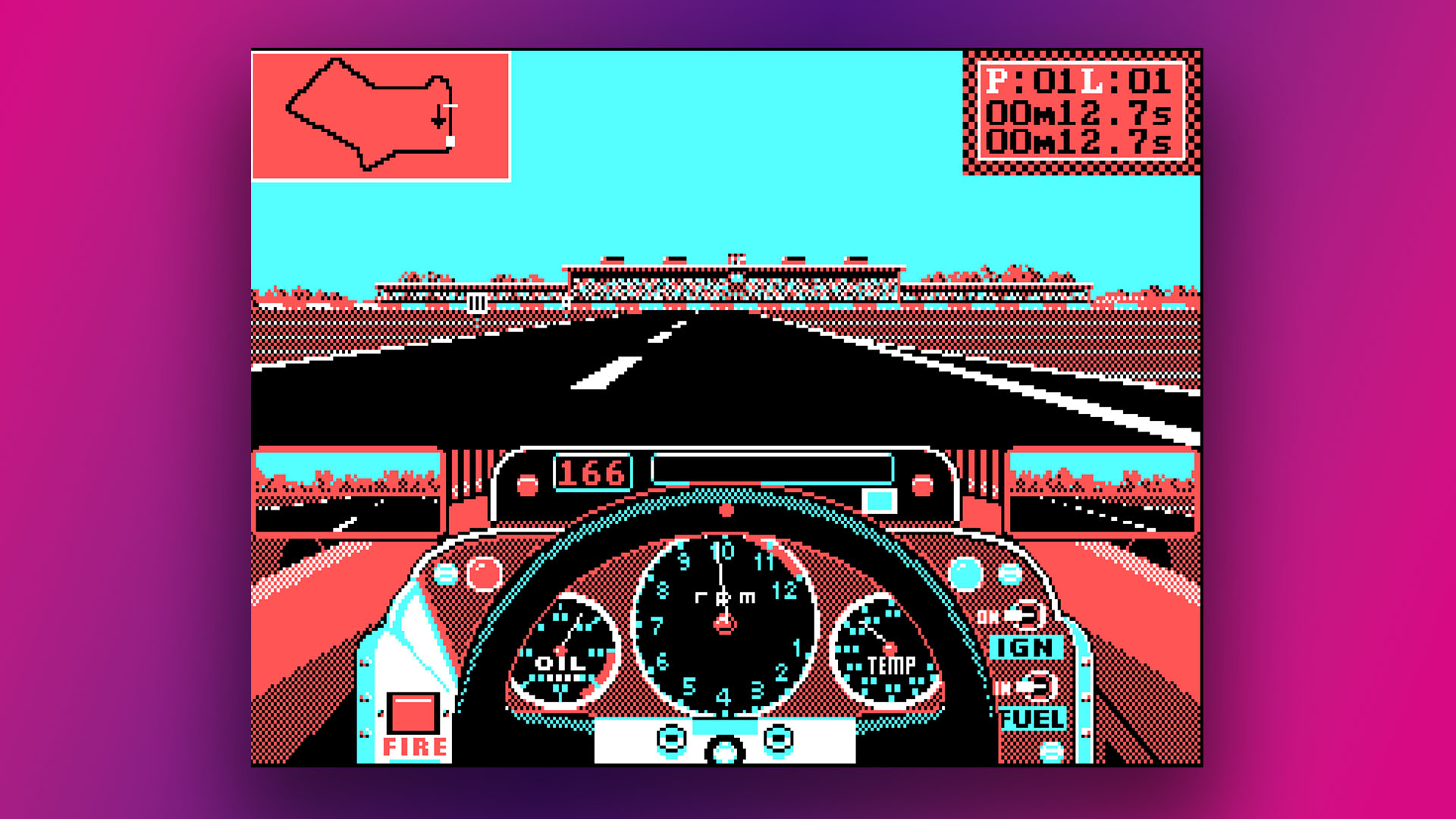
Sierra’s Leisure Swimsuit Larry within the Land of the Lounge Lizards, for instance, used palette 0 at low depth, however changed the black background coloration with blue (it seems to be hideous). This palette labored effectively in golf recreation World Class Leaderboard, although, with inexperienced and brown timber, crimson leaves, inexperienced grass and blue skies and water – colours you need to be capable to take without any consideration.
Sierra used the identical trick in King’s Quest IV: The Perils of Rosella, however utilizing the BIOS mode 5 palette, once more changing the black with blue. The end result was a blue, cyan, crimson and white palette, which labored effectively with blue sea in opposition to cyan sky, however meant the grass and timber appeared very odd.
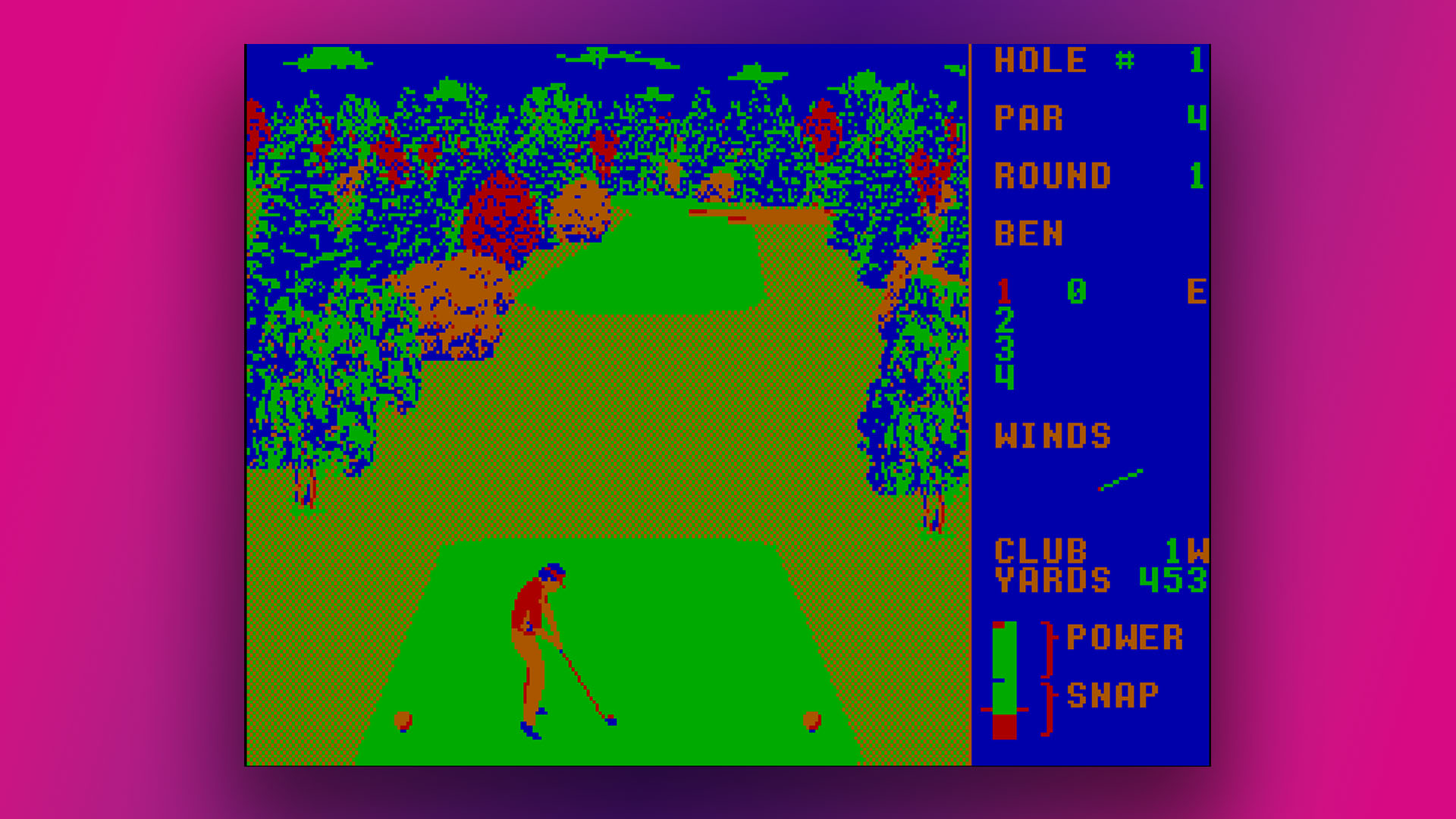
CGA mono graphics
The opposite principal graphical possibility out there to plain CGA playing cards was the ‘high-resolution’ 640 x 200 monochrome mode. It was utilized in video games that had a good quantity of element within the graphics, equivalent to Sim Metropolis, Loss of life Monitor, and Xenon II: Megablast, amongst others. It was additionally used for early GUI working methods, equivalent to Gem and Home windows 3.0.
Nevertheless, solely the horizontal decision was greater than the colour graphics decision – the vertical decision was the identical. The end result was double-height, rectangular pixels, fairly than sq. ones. This mode additionally produced a hideous moiré impact on numerous CGA screens, making it troublesome to take a look at the display screen.
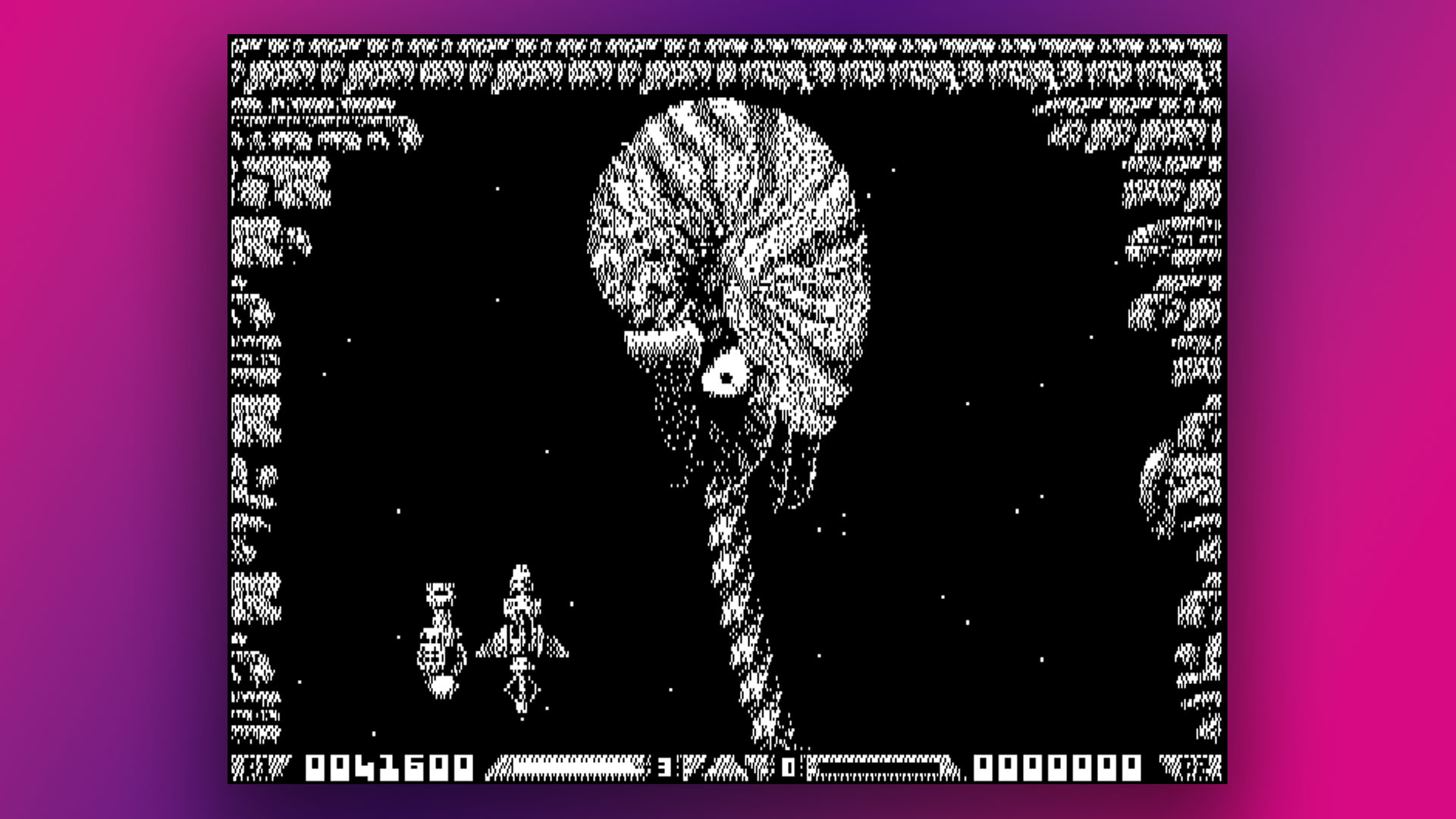
CGA composite mode
There was yet another trick to getting a typical CGA card to show extra characters, and it concerned cleverly utilizing the composite output, fairly than the 9-pin RGB monitor output. Most PAL TVs within the UK weren’t capable of deal with this mode, because it’s depending on the NTSC chroma decoder mistakenly seeing some luminance indicators as coloration.
In consequence, you would successfully make new colours by lining up pixels in sure patterns on an NTSC show, and once more through the use of totally different intensities. By inserting one coloration pixel subsequent to a different one, you would make a wholly new coloration, and it appeared stable fairly than a messy mixture of pixels. The result’s astonishing, enabling you to create a a lot wider coloration palette.
The drawback, after all, is that the impact can solely be achieved by inserting pixels subsequent to one another, which successfully reduces the horizontal decision from 320 to 160. Some video games supported this mode, although, together with Sierra’s authentic King’s Quest recreation. You’ll be able to see the large distinction it makes within the screenshot beneath, the place the picture on the left makes use of commonplace RGB, and the picture on the appropriate makes use of the composite mode.
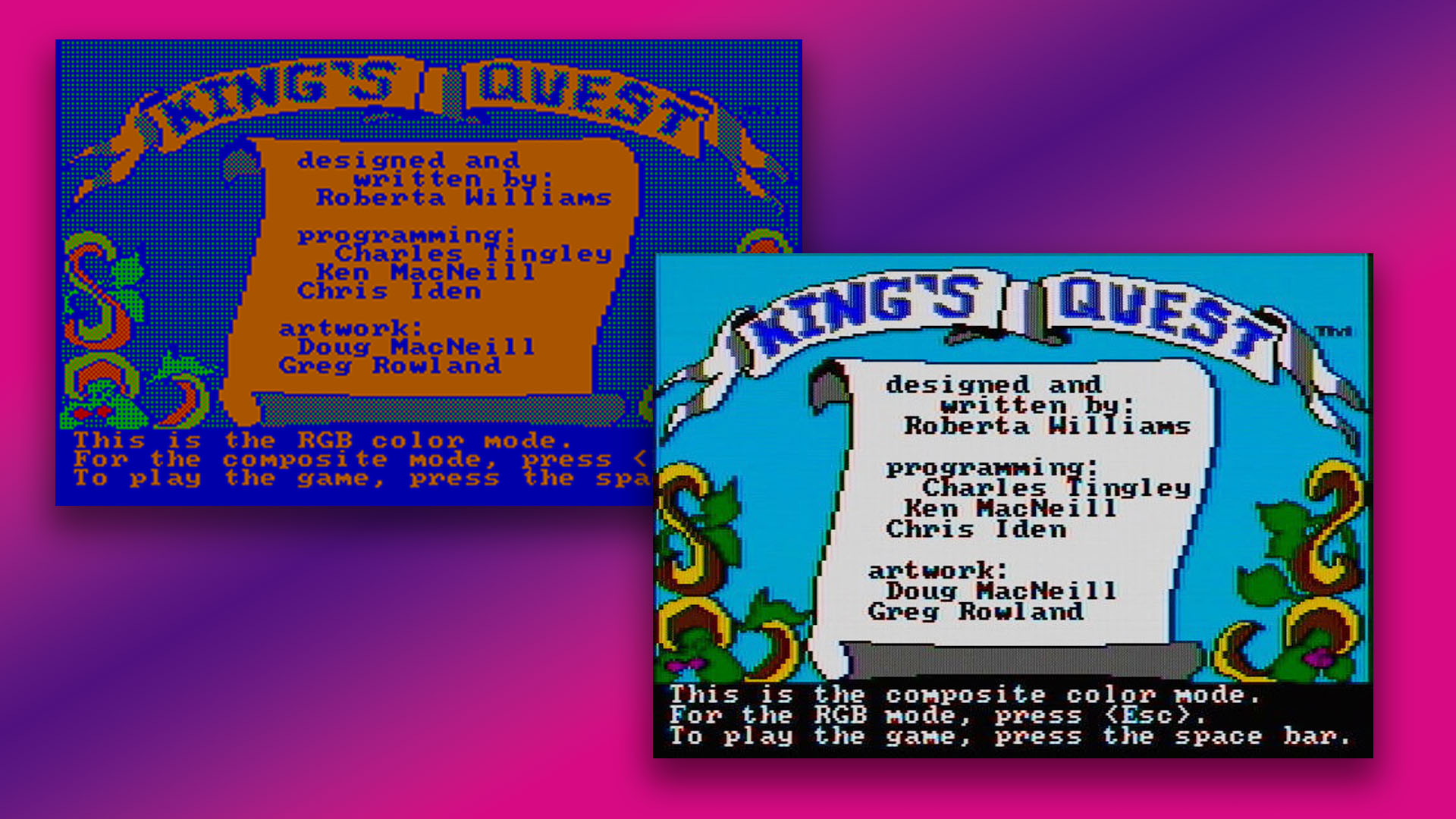
Attempt CGA for your self
Within the unlikely occasion that you just wish to check out the stunning shame that’s CGA graphics for your self, you are able to do it in DOSBox. This useful software program creates a digital machine designed to recreate a high-spec PC from the Nineties. It masses a sound card and MIDI drivers robotically, and will get you arrange with a mouse too. It’s nice if you wish to play a spherical of Doom or X-Wing.
Nevertheless, later VGA playing cards didn’t assist CGA palette-switching as commonplace. They may run CGA software program, however often within the default black, white, magenta, and cyan palette, even when they used a distinct palette on a CGA machine. DOSBox runs in VGA mode by default, which ends up in the identical drawback.
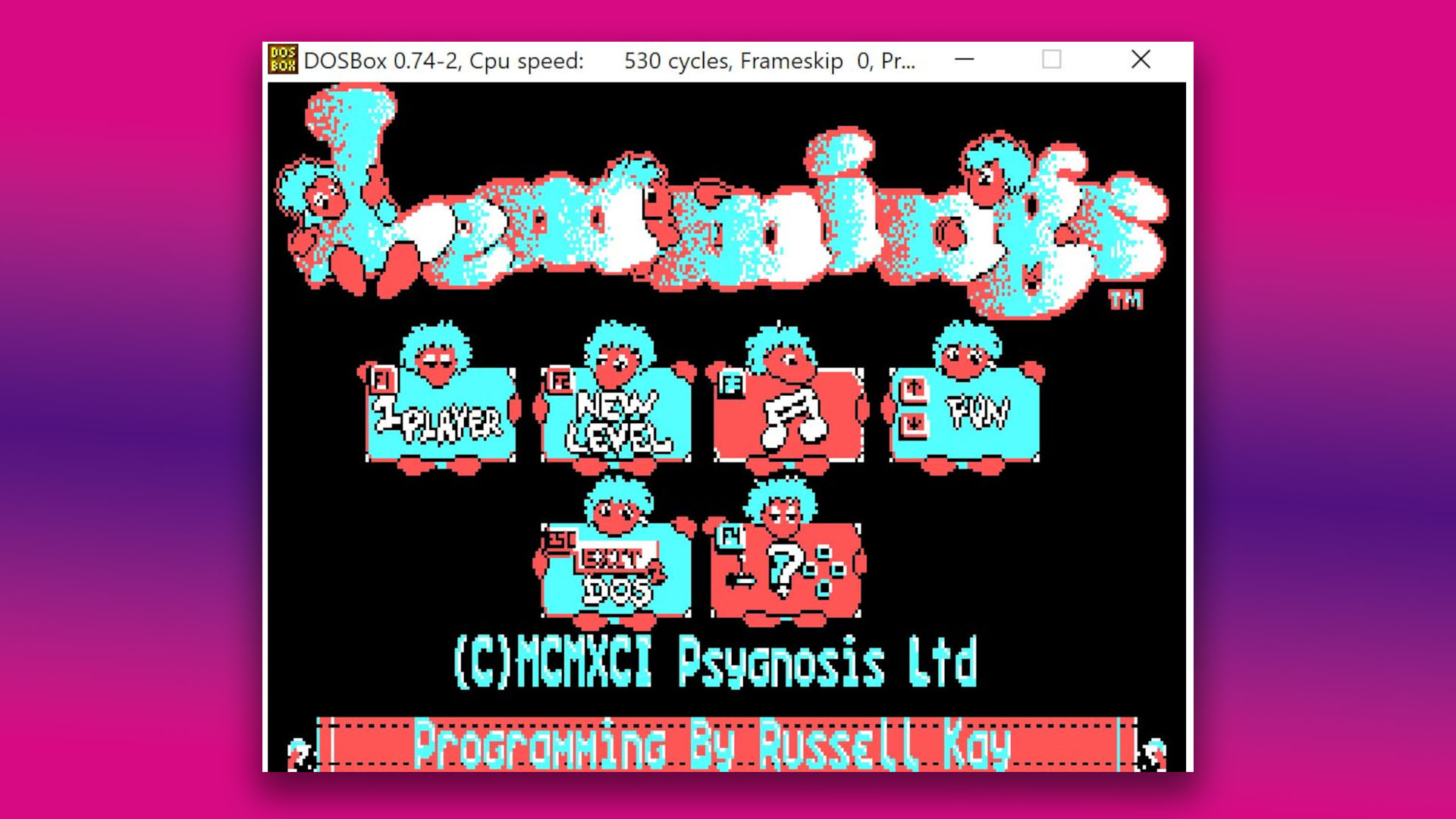
To get round it, you’ll have to open Choices in your Begin menu’s DOSBox folder, which takes you into the config file. Scroll all the way down to the ‘[dosbox]’ part, and kind ‘cga’ after ‘machine=’. After that, scroll all the way down to the ‘[render]’ part, and kind ‘true’ after ‘facet=’.
On some screens, chances are you’ll discover that you just nonetheless don’t get the proper 4:3 facet ratio, even after altering the facet setting to true. If that occurs, we discovered that setting ‘fullresolution=’ to ‘1366×768’ fastened it on our 4K monitor.
If you wish to run a extremely previous recreation, it could even be optimized for early CPUs, and can run too quick on DOSBox’s commonplace settings. If you wish to emulate an Intel 8086 PC, scroll all the way down to [cpu] and kind ‘easy’ after ‘core=’ and alter the variety of cycles to 530 (this isn’t precise, nevertheless it was close to sufficient in our exams).
If you happen to’re searching for extra retro content material, try our PC retro tech web page. If you happen to’re trying to construct a brand new PC (with significantly better graphics, naturally!), you then’ll additionally wish to learn our full characteristic on learn how to construct a gaming PC, which takes you thru each step of the method.

